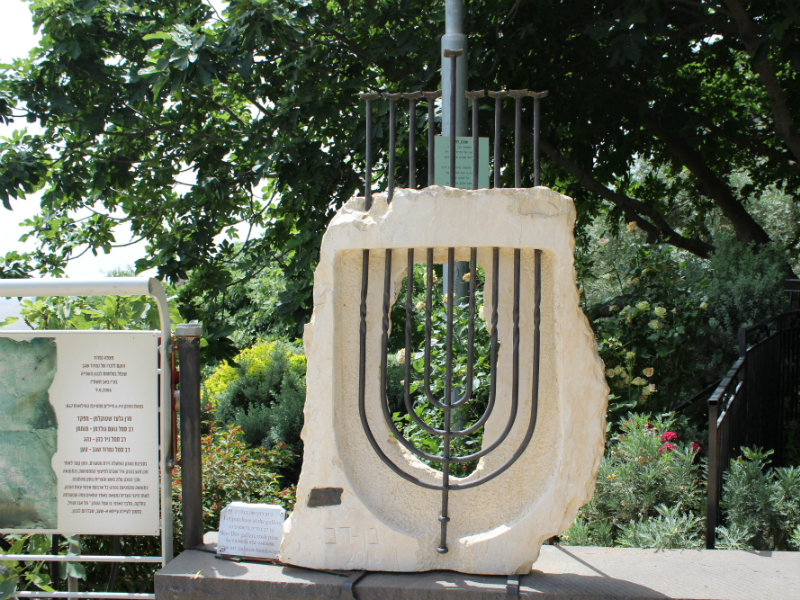It’s a hot day in the northern Israeli city of Rosh Pinna, but filmmakers Igal Hecht and Aaron Daniel Mandel are out filming at the Nimrod Lookout Point, a war memorial that commemorates Nimrod Segev and his tank crew, who were killed in the Second Lebanon War.
They are here to interview artist Chanoch Bendov, whose sculpture can be seen at the lookout point. The sculpture, which is a menorah made mostly of iron and stone, stands tall and is hard to miss when visiting the memorial.
It is here that Hecht and Mandel first encountered Bendov’s art, the majority of which have Jewish themes, eventually leading them to contact the artist and feature him in one of the episodes of their show, Holy Art.
The show is now in its third season, and can be viewed on YES TV. It premiered in 2018 and the final season of the show will be out sometime in 2020.
The Toronto-based filmmakers have traveled all around Israel – from as far south as Mitzpe Ramon, all the way to Shtula in the north– in search of the best “holy” artists, whose work is in some way inspired by religion or spirituality. Throughout the show, they have visited over 40 cities, towns and settlements, and have filmed over 90 artists.
“Holy Art is basically a show that explores artists in Israel – artists of all facets, of all genres, of all disciplines, of all faiths,” says Hecht. The show features artists from Jewish, Christian, Muslim and Druze communities, and explores how they have incorporated religion into their various art forms.
The artists include comedians, silversmiths, classical painters, musicians, glassblowers, graffiti artists, sculptors, jewelry makers, comic book artists, photographers and filmmakers.
“It’s really an unprecedented view and exploration of Israeli art,” says Hecht. “We really take an interest in the artist, we present them to the viewer and we take an interest in the land itself.”
Having a diversity of artists and types of artistic media was a big priority for Hecht and Mandel, because so much of the media coverage of artists in Israel revolves around the art scenes in Tel Aviv and Jerusalem, and often only covers the work of Jewish men.
“We’re giving a platform to artists and people who aren’t generally given an opportunity to have media coverage, people living outside of the classic Tel Aviv bubble,” says Mandel. He also notes that they feature artists ranging in age from their 20s to 80s, all of whom represent a different time and place in Israeli history.
Much of their show follows the stories of women in Orthodox Jewish, Christian, and Arab communities, as well as other minority groups. Hecht says the show demonstrates just how much art has influenced the lives of these women, by empowering them within their own communities and allowing them to have the opportunity to earn a living.
“They normally don’t have the same kind of coverage in the media, or given the opportunities to explore who they are and what the world means to them,” says Mandel. “The whole show is through the words and vision of the artists – we’re giving them the opportunity to let us into their world and explore their art.”
The artist’s location also played a major role, because Hecht and Mandel wanted the show to feature people from all over Israel, not just those living in big cities.
“In this country, … there is an unbelievably abundant amount of artists that people should really be exposed to and I think that’s what we’re trying to do,” says Hecht.
